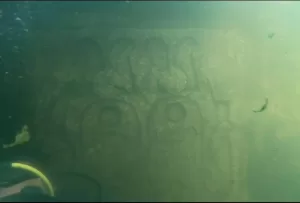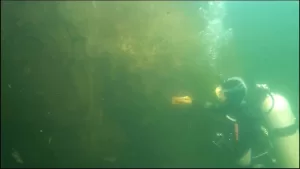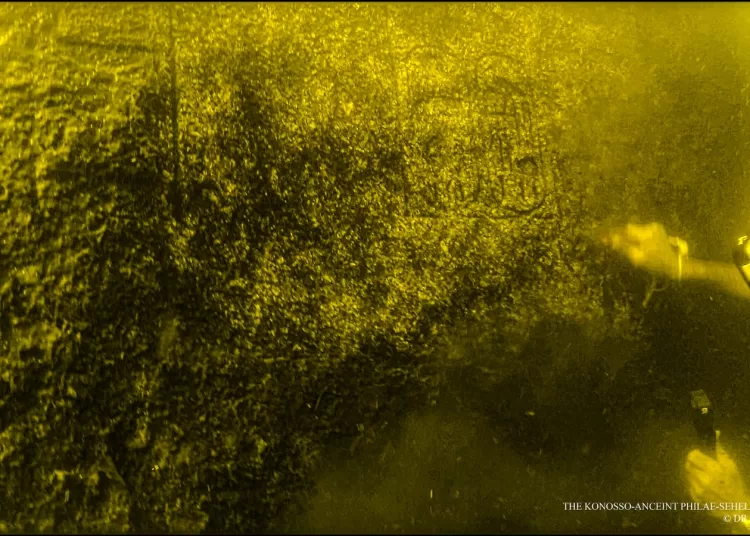Several engravings and miniature images depicting pharaohs Amenhotep III, Thutmose IV, Psamtik II, and Ahmose were discovered during the inaugural underwater photographic archaeological survey project in Aswan. This project took place beneath the waters of the Nile and aimed to examine rock inscriptions located between the Aswan reservoir and the High Dam.
These inscriptions, initially found during the Nubian archaeological salvage campaign in the 1960s for High Dam construction, had not been previously analysed.
The joint Egyptian-French archaeological mission, under the supervision of the Supreme Council of Antiquities in partnership with Paul Valéry University of Montpellier, implemented this project.
The joint mission conducted its first excavation season near the original Philae and Konosso islands. Due to the remarkable preservation of the inscriptions, the mission meticulously documented the texts.
Employing modern techniques such as diving, archaeological surveying, underwater photography, videography, photogrammetry, and archaeological drawing, the mission identified and documented the remaining rock inscriptions on the surfaces of Konosso rocks. This included those submerged underwater and partially exposed.

Currently, the mission is creating three-dimensional models of these newfound inscriptions and analysing them for future scientific publications to assist in their protection and conservation.
The continuous archaeological survey work indicates the potential discovery of additional inscriptions and historical insights related to ancient Egypt.
This includes details from the 18th Dynasty period, encompassing the reigns of Pharaohs Thutmose IV and Amenhotep III, as well as rulers from the late period like Pharaohs Psamtik II and Ahmose.







Discussion about this post